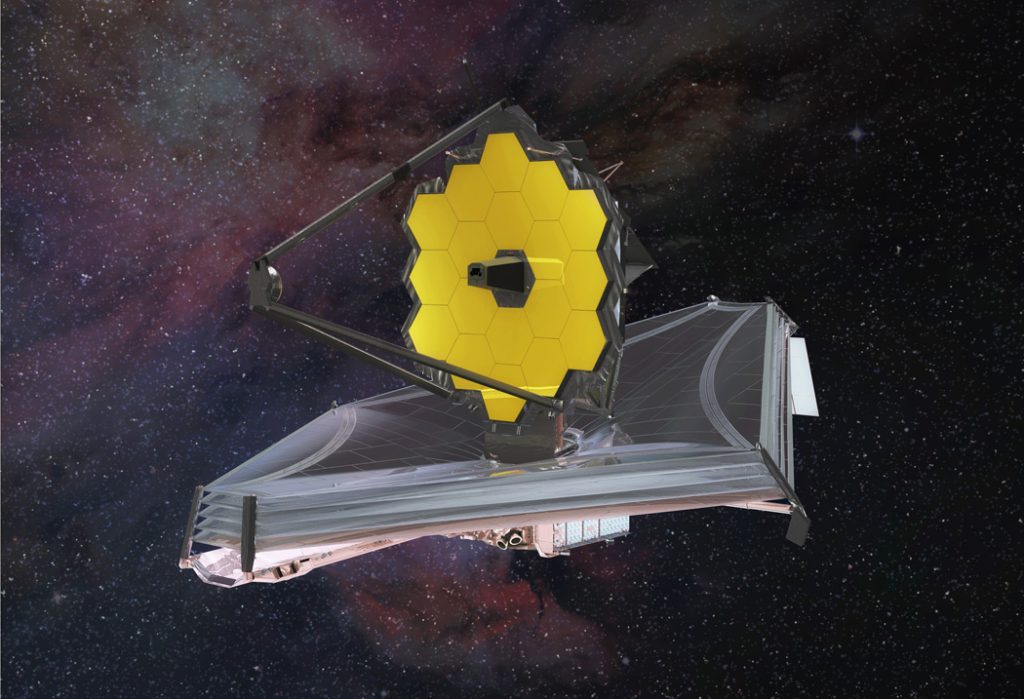
As an undergrad, I was re-quired to memorize the speed of light: 186,000 miles per second. It’s a factoid that has always delighted me.
It takes light from the sun 8 minutes to reach Earth. Light from the North Star takes 680 years. When we look at that star, we’re seeing it as it appeared 680 years ago.
We look back in time when we look at the night sky, and astronomers and physicists are eager to see as far back in time as possible. This has been a major purpose of the space-based Hubble telescope, which has been in operation since 1990 and will be a project of the recently launched James Webb Space Telescope. We want to know where we came from.
Physicists would have it that the universe began with a big bang, some primordial essence exploding into existence. The observed galaxies are all speeding away from one another, flying apart like the pieces of a popped balloon. Measuring this increasing rate of expansion, they’ve calculated that the beginning was some 13.8 billion years ago.
The original elements gradually coalesced into stars, huge nuclear fusion reactors that eventually die, with some undergoing supernova explosions that congeal heavier elements, such as uranium and gold.
Gravitation attracts dust and gas and suns, eventually forming vast accretions we call galaxies.
In cosmic time, everything out there is aswirl and dynamic, with galaxies slowly rotating and sometimes colliding. This dynamism includes huge black holes at the center of the most massive galaxies that suck in everything in their vicinity, sometimes belching hot matter after having swallowed a star.
The immensity is staggering. There are an estimated 200 billion stars in our Milky Way Galaxy and 200 billion galaxies in the visible universe.
And it all had a beginning.
The James Webb telescope, which was launched December 25 and arrived at its new home 1 million miles from Earth on January 24, will help scientists understand that beginning. It has an array of mirrors the size of a tennis court that work together to collect the faintest glimmers of infrared light from the distant universe. Park a telescope in the sky, and it’s in a much better position to examine the depths of space, to peer back in time, than Earth-based telescopes.
What do astronomers expect to see?
According to the NASA website, the early universe was a “hot soup” of elementary particles, such as gluons, bosons, and quarks. These elementary particles began to clump together to form nuclei of protons and neutrons. As the universe cooled, these began to combine into hydrogen and helium atoms, which then attracted electrons. This corralling of electrons is important because when they’re free floating, they tend to scatter light. Without these free-floating electrons, for the first time light would be able to stream across the young universe—with some of that light, after having traveled for nearly 13.8 billion years, due to find a destiny in the lens of the James Webb telescope.
The earliest stars fused hydrogen atoms into more helium, with this fusion giving off the first light. The James Webb telescope will help scientists see what these first stars looked like and give an idea when they first formed.
It will also give more insight into how the original “hot soup” elementary particles combined into atoms. This process of particles pairing, called recombination, is thought to have occurred about 240,000 to 300,000 years after the Big Bang.
The first stars, according to the NASA website, are hypothesized to have been more massive and millions of times brighter than our sun. The new telescope will help scientists understand their nature and give insight into the instrumental role they played in the formation of the first galaxies.
In addition to delving into the mysteries of the first stars and galaxies, other plans include using the telescope to study nearby exoplanets to see whether the conditions are suitable for the emergence of life.
It astonishes that we’re on the verge of seeing these early origins of the universe. The project was 25 years in the making at a cost of $10 billion dollars. And it impresses that such a project could come to fruition, given that it has no utility other than learning where we come from.
As humans, we exalt and deify ourselves on this speck of dust we call Earth, placing our species just below angels in the Great Chain of Being, and having dominion over other creatures. Given climate change and other depredations, Mother Earth, as we’re starting to see, might have something to say about this.
Yet there is something moving and profound in our deep desire to understand, such that we would place this curious eye a million miles from Earth.
Find column archives at JimKarpen.com.
